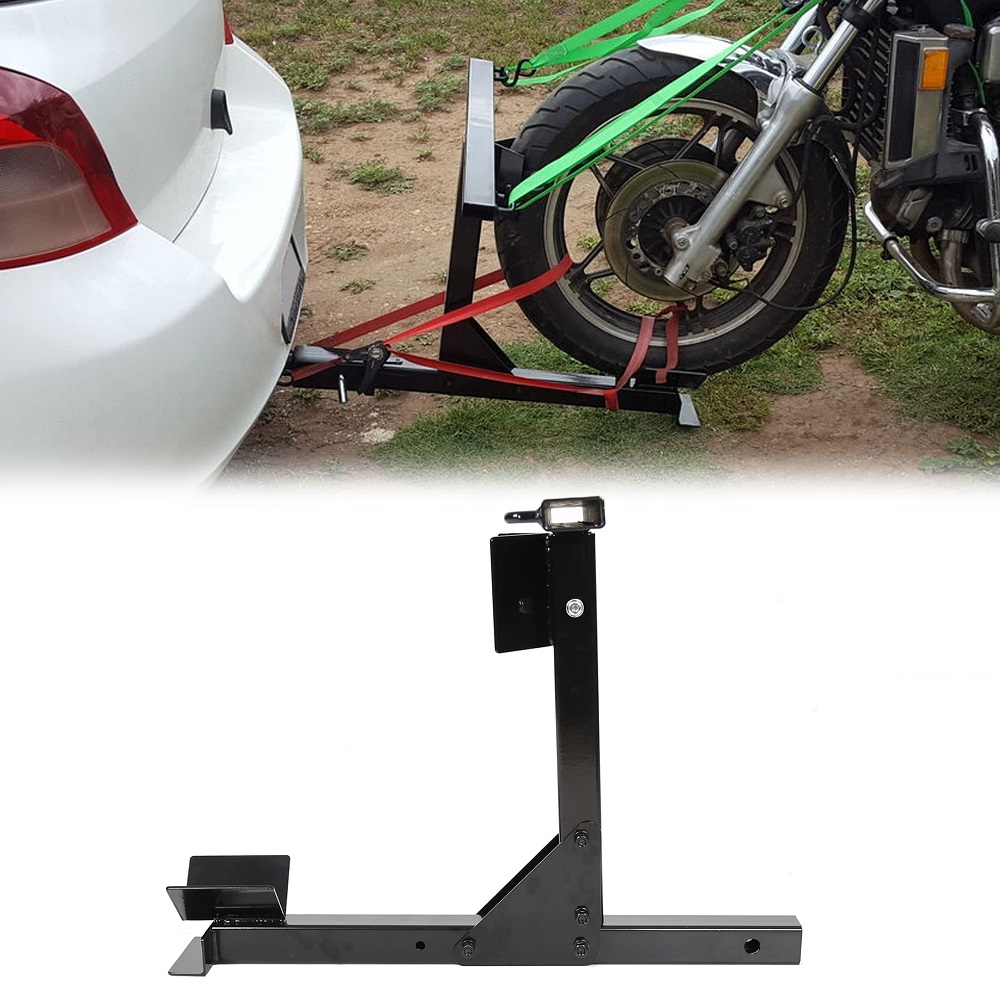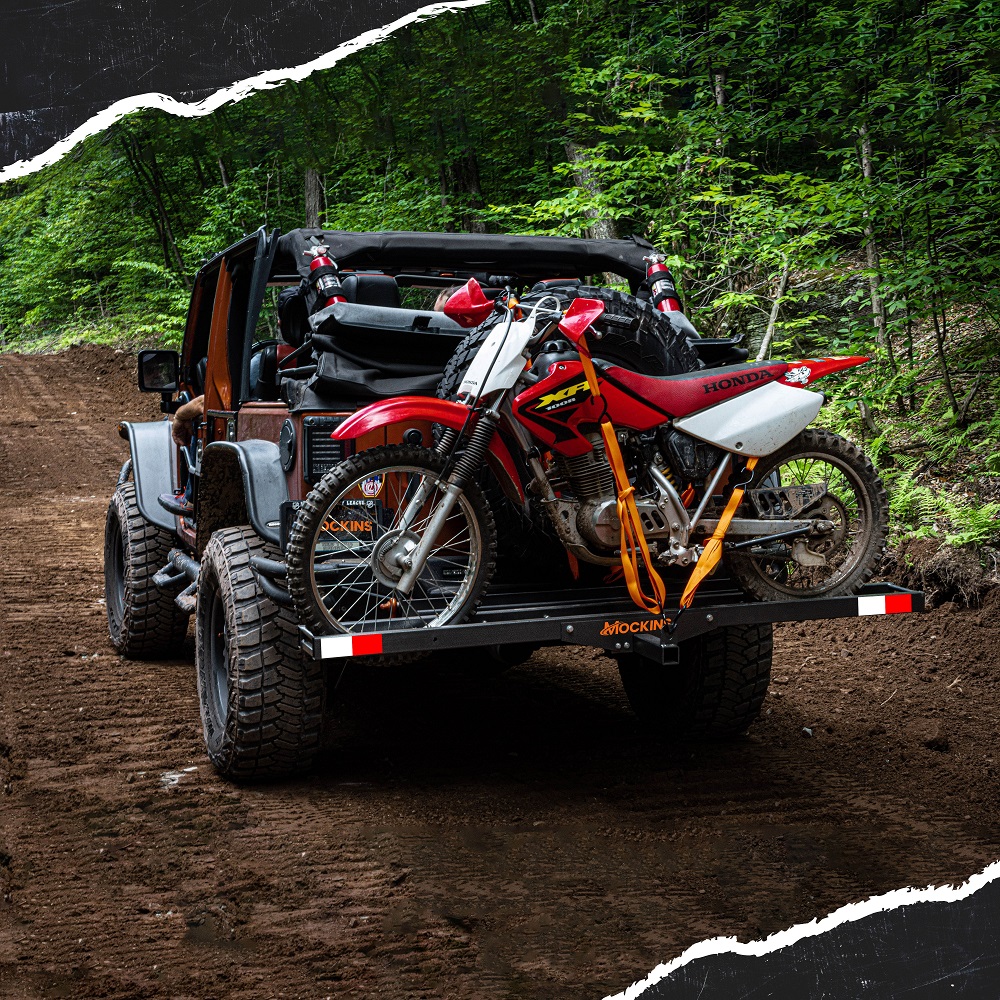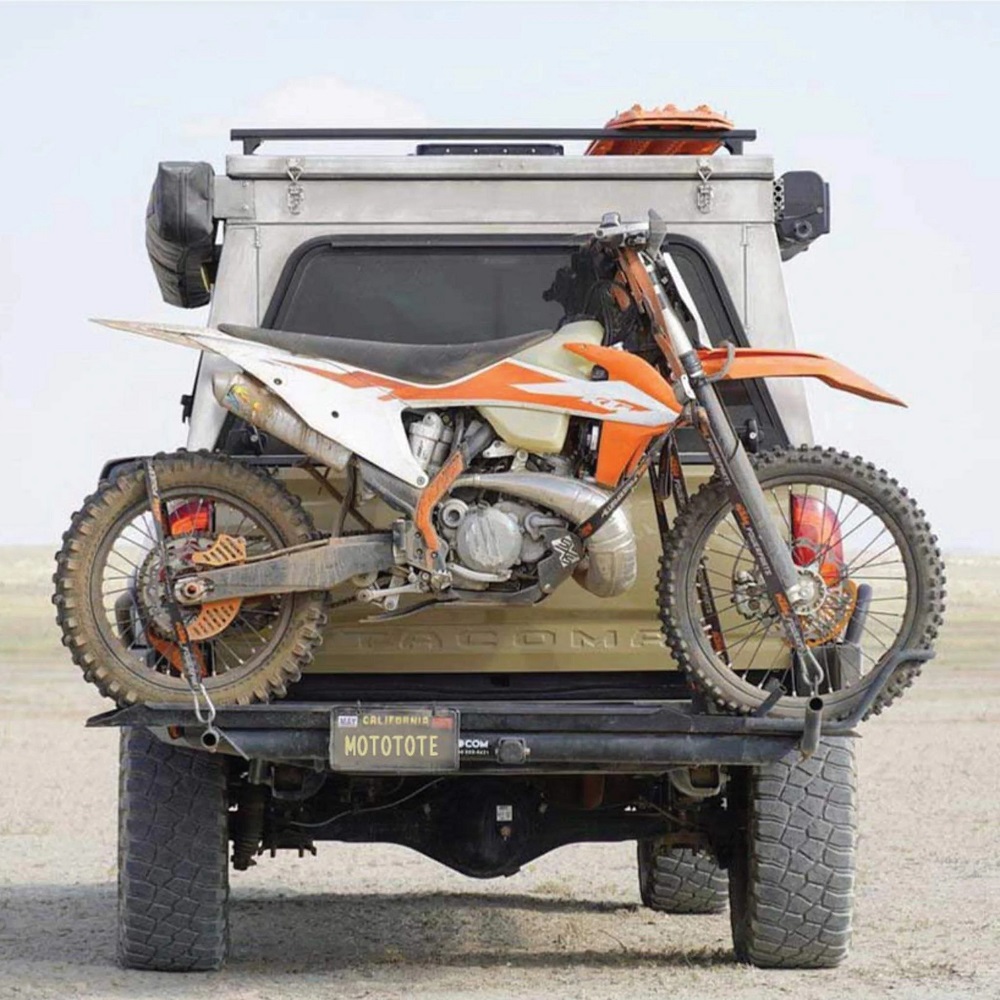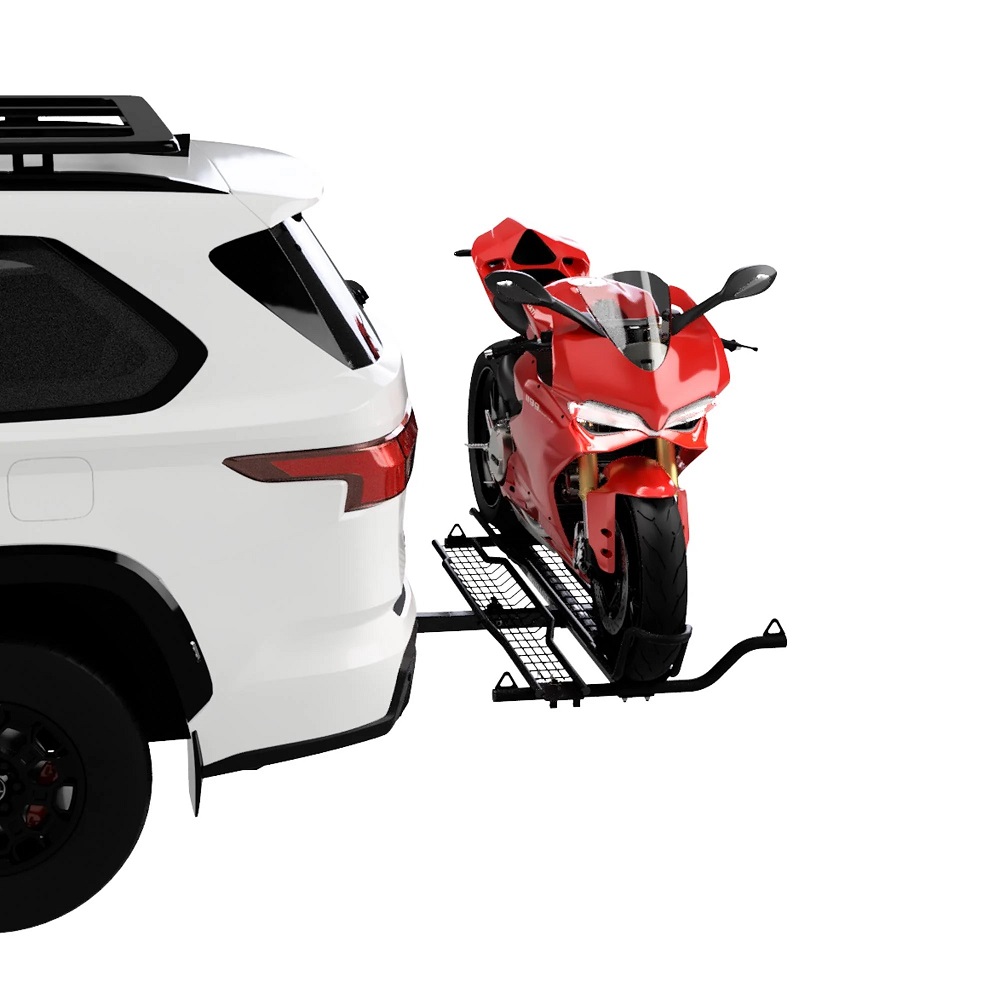Traveling with your motorcycle can be an exhilarating experience. Whether you’re heading to a scenic route, a racetrack, or a motorcycle rally, a hitch motorcycle carrier is a practical solution. These carriers simplify transporting your bike while keeping it secure during travel. However, loading and traveling with a motorcycle carrier can present challenges if you are unfamiliar with the process. In this article, we will discuss essential tips for easy loading and secure travel with a hitch motorcycle carrier.
Understanding Hitch Motorcycle Carriers
What is a Hitch Motorcycle Carrier?
A hitch motorcycle carrier is a specialized platform mounted to a vehicle’s hitch. Designed to transport one or two motorcycles, it allows you to haul your bike without the complications of a trailer. Motorcycle carriers come in various sizes and styles, catering to different vehicle types and motorcycle models.
Hitch carriers typically attach to a standard 2-inch receiver hitch. Some models are also foldable, allowing for easier storage when not in use. Understanding these components is essential for selecting the right carrier for your needs.

Benefits of Using a Hitch Carrier
Using a hitch motorcycle carrier offers several advantages over traditional trailers. First and foremost, they are generally lighter and more compact, making them easier to handle and store. Unlike trailers, hitch carriers do not require additional parking space and can facilitate quick loading and unloading.
Another benefit is increased fuel efficiency. Trailers can significantly reduce gas mileage due to their weight and aerodynamics. In contrast, hitch carriers, being lighter in design, do not have the same negative impact on fuel consumption. This efficiency can reduce overall travel costs.
Things to Consider
When selecting a hitch motorcycle carrier, consider several factors—weight capacity, compatibility with your vehicle, and ease of installation. The weight capacity must match or exceed the weight of your motorcycle for optimal safety. Also, ensure the carrier fits your vehicle’s hitch type and size.
Assessing the ease of installation will also save time and frustration. Look for models with clear instructions and minimal assembly required. An intuitive design allows for a smooth and quick attachment process, making your travels much easier.
Preparing for Loading Your Motorcycle
Check Weight Distribution
Before loading, it is essential to understand the weight of your motorcycle. Knowing the weight helps you determine if your hitch carrier can support it. Many carriers have a maximum weight limit, and exceeding this limit can lead to unsafe travel conditions.
To accurately assess your motorcycle’s weight, consult the manufacturer specifications. If necessary, use a scale to weigh the bike. Ensuring proper weight distribution not only protects the motorcycle but also ensures the stability of the carrier during travel.

Gather Necessary Equipment
Having the right equipment on hand simplifies the loading process. Besides the hitch carrier itself, consider using ramp options that are robust and wide enough to accommodate your motorcycle. Ramps provide a safe and effective method of loading, reducing the risk of accidents or damage to the bike.
Additionally, have tie-down straps and bungee cords ready to secure the motorcycle once it’s loaded. A reliable strap system is vital to ensuring the bike does not shift or fall during transport. Prior preparation leads to a more efficient and smoother loading experience.
Inspect Your Carrier
Before loading, thoroughly inspect the hitch motorcycle carrier. Look for any signs of damage, such as cracks or rust, especially on the mounting points. Ensure that all bolts and connections are tight and check the stability of the ramp.
By performing a thorough inspection, you can avoid potential mishaps once the motorcycle is loaded. Addressing any concerns promptly will enhance overall safety during travel, ensuring that your bike is secure throughout the journey.
Loading Your Motorcycle Safely
Positioning the Motorcycle
When you’re ready to load your motorcycle onto the hitch carrier, position the bike so that it aligns with the ramp and carrier. If you have a friend or fellow rider, enlisting their help can be beneficial. One person can guide the motorcycle while the other operates it, making the loading process smoother.
When starting, make sure the bike is in neutral. This will enable you to push it forward effortlessly without stalling. Also, check that the ramp is secured and securely attached to the carrier before proceeding.

Using the Ramp Correctly
Using the ramp correctly is critical for a safe loading experience. Start slowly, guiding the motorcycle up the ramp with smooth, controlled movements. Avoid rushing or accelerating abruptly, which can lead to loss of control and potential injury.
Be aware of the angle of the ramp and take measures to accommodate any steepness. If the ramp is too steep, consider repositioning it or utilizing a shorter ramp that may reduce the incline. Pay close attention to securing the footpegs and brake requirements as you navigate the ramp.
Securing the Motorcycle
Once your motorcycle is securely on the carrier, it’s time to secure it using tie-down straps. Properly securing the bike is vital to prevent movement during transport. Starting from the handlebars, position one strap on each side of the motorcycle.
Attach the strap hooks firmly to the carrier or anchor points, ensuring the straps are tight but not overly restrictive. Next, secure a strap on the back of the motorcycle, again ensuring it is anchored solidly. This will keep the bike stable and reduce the chances of accidental movement or falling.
Traveling with a Hitch Motorcycle Carrier
Mindful Driving Practices
Once the motorcycle is loaded and secured, it’s essential to adopt mindful driving practices. Keep speed to a reasonable limit and be cautious when turning or braking. The additional weight of the motorcycle can affect your vehicle’s handling and stopping distance, so remain attentive to these changes.
It’s also wise to avoid sudden maneuvers, such as sharp turns or rapid lane changes. Maintaining a smooth driving style will help ensure your bike stays securely in place on the carrier while you navigate the road. Regularly checking your mirrors and observing traffic around you can help maintain a safe distance from other vehicles.

Periodic Checks
During long trips, periodically stop to check on the motorcycle and carrier. This is especially important after driving for a significant time. Stop and inspect the straps to ensure that they remain secure. Verifying that everything is still tightly fastened will put your mind at ease and enhance safety versus just assuming everything is intact.
Additionally, check the carrier for any signs of wear or damage. Ensuring all components function correctly preserves the integrity of both the motorcycle and carrier. Taking these breaks will also allow you to stretch your legs and refresh during the journey.
Choosing the Right Route
Selecting your travel route can minimize potential issues during the trip. Roads with minimal traffic and fewer hazards, such as sharp turns or steep inclines, will provide a safer experience. Additionally, consider the road surface quality and whether it accommodates heavy loads.
If traveling long distances, take note of rest areas where you can safely stop and inspect your motorcycle loading. Researching and planning your travel route beforehand will help you have a smoother journey while enhancing safety through careful consideration.
Storage and Maintenance After Use
Cleaning Your Carrier
Once you reach your destination, it is necessary to clean your hitch motorcycle carrier. Road grime and salt can accumulate and cause damage if not regularly cleaned. Using a mild detergent and warm water will remove dirt without harming the materials.
Pay special attention to the areas where your motorcycle was secured. Clean any residual debris or moisture to prevent corrosion and wear. Regular maintenance will keep your carrier functioning well, ensuring it remains a reliable asset for future travels.

Storing the Carrier
When not in use, ensure proper storage of your hitch motorcycle carrier. Detach it from your vehicle and store it in a cool, dry place. Considering protecting it from exposure to sunlight and moisture will help maintain its quality over time.
If you have space, consider storing it indoors or in a garage, away from weather elements. Properly securing it will prevent any parts from becoming warped or damaged during storage.
Inspecting Your Motorcycle
Following a trip, examine your motorcycle for any signs of wear or damage that may have occurred during transport. Check for loosened parts, scratches, or any indications of displacement that may need to be addressed. Regular inspections ensure that your motorcycle remains in optimal condition.
Pay attention to tire pressure and fluid levels, as these can affect performance before your next ride. Performing routine checks and maintenance helps extend the lifespan of your bike and ensures safety for future outings.
Embracing the Motorcycle Community
Connecting with Other Riders
Engaging with the motorcycle community can enhance your riding experience. By joining local clubs, you connect with fellow riders and share valuable experiences. Discussions around best practices for transport, riding tips, and gear recommendations foster camaraderie among motorcycle enthusiasts.
Participating in community events or group rides allows you to bond with others who share your interests. This engagement creates a support network that can offer encouragement and advice, enhancing your enjoyment of the riding lifestyle.
Participating in Rallies and Events
There are various motorcycle rallies and events that celebrate motorcycle culture. Wearing your motorcycle hoodie while attending such events helps showcase your enthusiasm within the community. Engaging in these gatherings can lead to unforgettable memories and friendships among fellow riders.
Events often feature showcases of new equipment, riding seminars, and competitions that highlight motorcycling skills. Participating in these activities not only fuels excitement but also deepens your connection with your passion for motorcycles.
Sharing Your Stories
Consider sharing your motorcycle journeys, tips, and experiences with others. Whether through social media, blogs, or local gatherings, documenting your adventures can inspire fellow riders. Sharing stories enriches the community by allowing others to relate to your experiences.
Engaging in discussions and offering insights enables you to formalize connections with fellow enthusiasts. Your experiences may encourage newcomers to embrace the motorcycle lifestyle, creating lasting impacts on their journeys, too.
FAQ:
- What is a hitch motorcycle carrier?
- A hitch motorcycle carrier is a platform-style trailer that attaches to a vehicle’s hitch, designed for transporting motorcycles. It allows riders to easily load and securely transport their bikes without the need for a full trailer, making it a convenient option for road trips and travels.
- How do I properly load my motorcycle onto the hitch carrier?
- To load your motorcycle, first align the carrier with your bike. Use a loading ramp to create a smooth incline. Ensure the bike is in gear, and if needed, use a helper to guide it. Secure the motorcycle using tie-down straps or wheel chocks to prevent movement during transit.
- What weight capacity should I look for in a hitch motorcycle carrier?
- The weight capacity you need will depend on your motorcycle’s weight. Choose a carrier with a capacity greater than your bike’s weight, typically between 400 and 600 pounds for most carriers. Always check both the carrier’s weight limit and your vehicle’s hitch rating to ensure safe transport.
- Are hitch motorcycle carriers compatible with all vehicles?
- Most hitch motorcycle carriers are designed to fit standard 2-inch receiver hitches, but compatibility can vary based on the vehicle and hitch type. Always verify that your vehicle’s hitch rating aligns with the carrier’s specifications. Additionally, consider ground clearance when loading the carrier.
- How can I secure my motorcycle while using a hitch carrier?
- Secure your motorcycle by using heavy-duty tie-down straps or wheel chocks. Ensure the bike is upright and stable before strapping it down. Double-check that the straps are tight and that the bike doesn’t move when pushed. Additionally, regularly inspect the straps during travel for any signs of loosening.
Conclusion
Hitch motorcycle carriers are indispensable tools for transporting your motorcycle safely and efficiently. Understanding how to load, secure, and care for your motorcycle helps ensure an enjoyable riding experience.
Additionally, embracing the community aspects of motorcycling enhances your lifestyle, providing opportunities for connection and shared experiences. By integrating best practices in care and style, you can maintain your gear well while expressing your enthusiasm for the sport.
Ultimately, the camaraderie and passion for riding contribute to making your adventures even more fulfilling. With top-rated hitch motorcycle carriers for SUVs and trucks, you can embrace the thrill of transporting your motorcycle safely and securely, ready to hit the road whenever adventure calls. Enjoy the confidence that comes from having the right equipment and support to make every ride exciting and hassle-free. Happy riding!

Leave a Reply